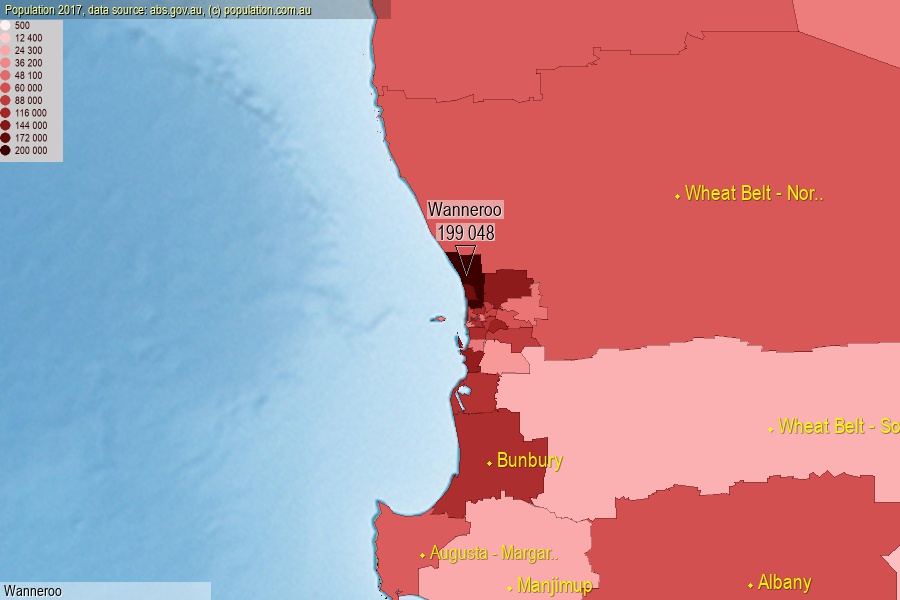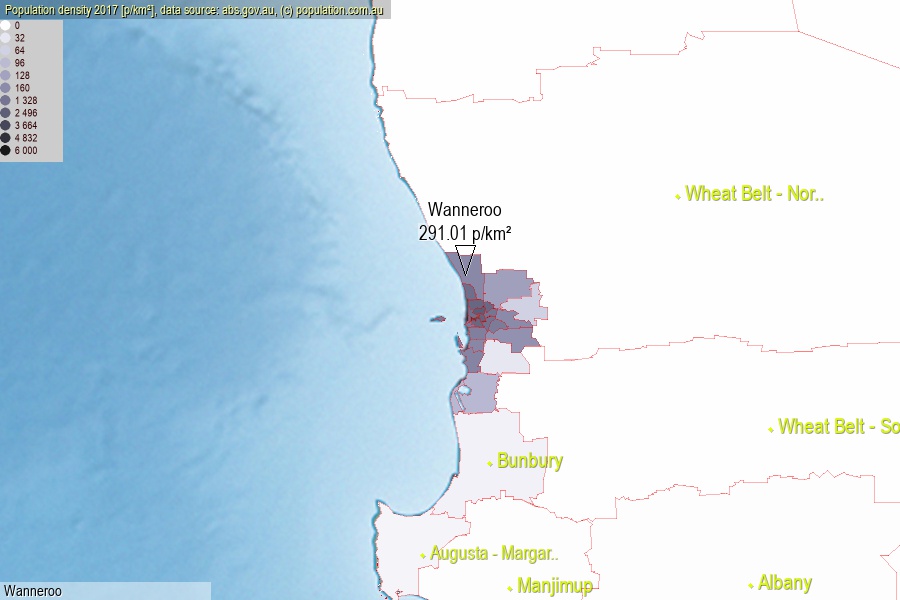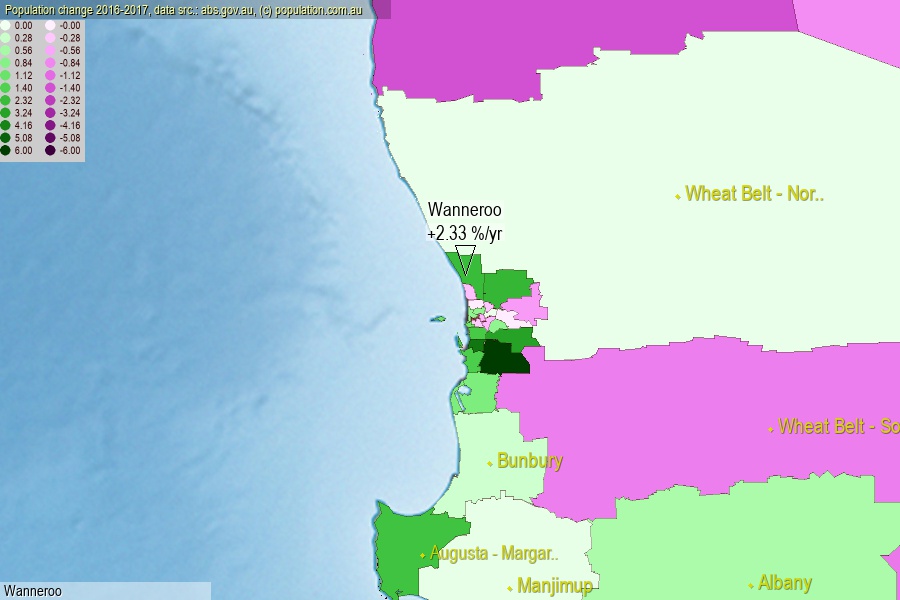 population.com.au
population.com.auLast official estimated population of Wanneroo (as Statistical Area Level 3) was 199 048 people (on 2017-06-30)[2]. This was 0.80% of total Australian population and 7.68% of WA population. Area of Wanneroo is 684.00 km², in this year population density was 291.01 p/km² . If population growth rate would be same as in period 2016-2017 (+2.33%/yr), Wanneroo population in 2025 would be 239 329. [0]



Click to enlarge. Wanneroo is located in the center of the images.
Population [people], population density [p./km²] and population change [%/year] [2]
View borders » (new window) [4]
[1991-1992] +6.13 %/Y
[1992-1993] +7.67 %/Y
[1993-1994] +8.23 %/Y
[1994-1995] +5.97 %/Y
[1995-1996] +6.27 %/Y
[1996-1997] +6.54 %/Y
[1997-1998] +5.07 %/Y
[1998-1999] +5.21 %/Y
[1999-2000] +5.32 %/Y
[2000-2001] +4.68 %/Y
[2001-2002] +4.88 %/Y
[2002-2003] +6.08 %/Y
[2003-2004] +6.78 %/Y
[2004-2005] +6.86 %/Y
[2005-2006] +7.37 %/Y
[2006-2007] +9.48 %/Y
[2007-2008] +7.95 %/Y
[2008-2009] +7.37 %/Y
[2009-2010] +4.72 %/Y
[2010-2011] +4.93 %/Y
[2011-2012] +5.31 %/Y
[2012-2013] +4.59 %/Y
[2013-2014] +3.23 %/Y
[2014-2015] +3.20 %/Y
[2015-2016] +3.43 %/Y
[2016-2017] +2.33 %/Y
[0] Calculated with linear interpolation from officially estimated population
[1] Read more about SA3 and Australian Statistical Geography Standard (ASGS) on abs.gov.au
[2] Population data from Australian Bureau of Statistics (Population and density: 2017; change: 2016-2017)
[3] Digital Boundaries: Australian Statistical Geography Standard (ASGS) 2016.
[4] Border coordinates are simplifyed using Ramer-Douglas-Peucker algorithm.